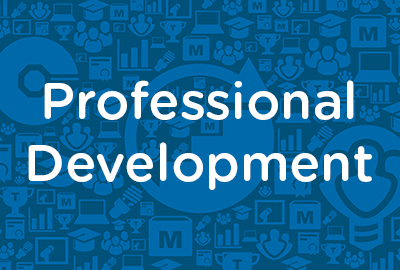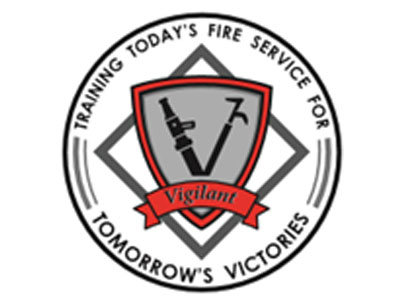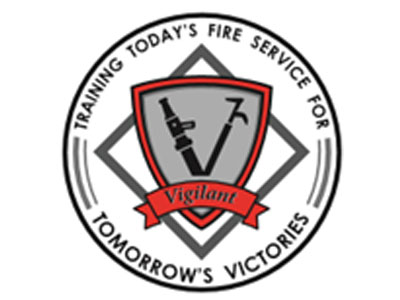 |
Sales: Completing |
0.75 |
In this course, you will learn how to negotiate with the prospect to reach a sale agreement. You will also learn how to complete a sale by preparing trial closing questions and a final closing question. |
 |
Interviewing Skills: EEO Guidelines (Instructor Guide) |
0.50 |
The Equal Employment Opportunity Commission (EEOC) administers and enforces Title VII, which prohibits discrimination in employment on the basis of race, color, religion, sex (including gender identity, sexual orientation, and pregnancy), national origin, age (40 or older), disability, or genetic information. Other federal, state, and municipal laws also prohibit discrimination on these, and other, bases.
In this course you will learn to: list the provisions, general principles, and key terms of EEO, and identify appropriate and inappropriate interview questions, including those that are not permissible according to the law.
This Instructor's Edition of this course includes notes and suggestions to assist you in presenting the material, whether in an in-person classroom setting, or as an instructor-led online or distance-learning course. It also provides you with the answers to questions found in mid-lesson activities, as well as in the quiz that concludes the course. |
 |
Handline Operation #1101 (Instructor Guide) |
1.00 |
This is the Instructor Guide for Lesson #1101 Hoseline Operation. This training session is a skill demonstration and evolution. The presentation is an instructor lead discussion that reviews the importance of fire streamflow for structural firefighting. The lesson reviews standard GPM flows for the AHJ appliances and discusses appropriate situations for the use of those appliances. The training session is concluded with three skills stations that require firefighters to operate hoselines and fire streams from an exterior position. |
 |
Building Upward: Resuscitation of Anaphylactic Shock Part 3—Scenario 2 |
1.00 |
In this second of three scenarios, we discuss the transport decisions that should be considered when dealing with the potential of a medical illness and a traumatic injury. Vanessa and Medical Director Dr. Jeremy Cushman discuss a patient who has a motorcycle accident that was caused by a beesting. This exciting discussion will effectuate a review of the minimum competencies of medical and trauma care at the EMT level. Final Exam: Please read each question carefully. You will have two attempts to gain a 70% or higher on this exam. If you are not successful in two attempts, you are welcome to take the course again to gain the certification. |
 |
Implicit Bias (Corrections) |
1.00 |
In this course, you’ll learn about implicit biases that happen despite our best intentions. After completing this course, you will be able to:
Define implicit bias.
Describe how implicit bias can impact the workplace or an organization.
Identify the steps you can take to further educate yourself about this topic. |
 |
Building Upward: Resuscitation of Anaphylactic Shock Part 4—Scenario 3 |
1.00 |
This scenario involves a patient with special needs who has developed angioedema. Paramedic student Vanessa Petote and Medical Director Dr. Jeremy Cushman speak about the care that a special needs patient must receive, as well as the specific challenges that accompany a patient with a potentially unstable airway. Final Exam: Please read each question carefully. You will have two attempts to gain a 70% or higher on this exam. If you are not successful in two attempts, you are welcome to take the course again to gain the certification. |
 |
Sales Management: Forecasting Sales Revenue |
0.50 |
This course will focus on identifying sales forecast factors and types of sales forecasts as well as discussing various types of forecasting approaches. |
 |
Sales Management: Motivating Sales Teams |
1.00 |
This course will focus on motivating sales professionals, monitoring and increasing motivation levels, and addressing substandard sales performance. |
 |
Sales Skills: Basic: Sales Fundamentals |
0.75 |
This course will focus on describing and implementing the sales process, working with clients to understand their decision-making process, and defining common sales terminology. |
 |
Correcting Performance Problems: Providing Feedback To Employees (Instructor Guide) |
0.84 |
By addressing employees who have performance problems, you can help them make positive changes, encourage career advancement, and promote personal and professional growth. Addressing an employee involves providing the feedback necessary to improve performance.
In this course you will learn to: prepare to conduct a feedback session in which you encourage communication with the employee, and conduct a constructive feedback session with an employee who has a performance problem.
This Instructor's Edition of this course includes notes and suggestions to assist you in presenting the material, whether in an in-person classroom setting, or as an instructor-led online or distance-learning course. It also provides you with the answers to questions found in mid-lesson activities, as well as in the quiz that concludes the course. |
 |
Transition Planning: Preparing Students with IEPs for Life After High School |
1.00 |
This course covers transition planning for paraprofessionals and teachers. Transition planning is a process that supports movement from school to post-school activities for a student with a disability. It’s a set of coordinated activities focused on improving the academic and functional achievement of the student as they move into various post-secondary vocational and educational settings. |
 |
The Neuropsychology of Trauma and How It Impacts Learning |
1.00 |
Understanding the root of trauma and how we can cultivate a well- functioning classroom is an essential task for educators. How do VUCA (volatility/uncertainty/complexity/ambiguity) impact child and adolescent development? How do ACEs (adverse childhood experiences) impact child and adolescent development? How do SCARF needs (status/certainty/autonomy/relatedness/fairness) impact child and adolescent development? This workshop gives participants insight into the workings of the sympathetic (fight or flight) and parasympathetic nervous system (rest and digest) and their impact on learning. |
 |
Bed Bug Protection Tips |
0.50 |
This course covers numerous ways to help protect you from the dangers of bed bugs. It will cover tips and tricks to prevent and get rid of bed bugs, along with what to do if you are exposed to them. |
 |
Fire Suppression Tactics |
1.00 |
No other tactic on the fireground has a higher potential for saving lives and protecting property than Fire Suppression. Suppression on the fireground can be deployed in multiple strategies and performed through a variety of methods. This course will discuss the application of suppression tactics and tasks while operating in different operational modes under strategies selected as a result of assessed risk. Application of these suppression tactics are matched with the appropriate strategy and task methods are introduced. Each type of suppression task method is described in detail along with a review of its specific strengths and weakness. |
 |
Sales Skills: Advanced: Developing a Winning Strategy |
0.50 |
This course will focus on examining consulting strategies and developing solutions for clients. |
 |
Sales Skills: Advanced: Effectively Closing a Sale |
0.75 |
This course will focus on demonstrating the benefits of your product or service to others, confirming the client’s commitment by recognizing and responding to signals, and closing the sale and following up with the client. |
 |
Sexual Harassment Prevention: Defining Sexual Harassment |
0.25 |
The learning objectives for this course are to avoid sexually harassing behavior and realize the cost of sexual harassment to an organization and to identify the psychological, health-related, and career-related effects of sexual harassment. |
 |
Business Ethics: Ethical Decisions (Instructor Guide) |
1.67 |
In this course you will learn to: define business ethics, describe how to balance personal values and organizational ethics, and identify common ethical dilemmas and their causes, and describe the DECISIONS method of making ethical decisions and identify the barriers to making such decisions. |
 |
Fire Behavior Basics #401 (Instructor Guide) |
1.00 |
This is the Instructor Guide for Lesson #401 Fire Behavior Basics. This instructor guide provides the instructor with lesson background, key points and delivery methods. Required lesson materials including lesson plan, presentation, and evaluation quiz with answer key. Included in this guide is an explanation video of the presentation that describes each slide of the lesson. |
 |
San Diego Zoo - Interpretation Basics: Module 2 |
2.50 |
Docents, guides, and interpreters who’ve successfully completed Interpretation Basics: Module I will further develop their interpretive skills by completing a second interpretation module. Interpretation Basics: Module II demonstrates the importance of purpose, message, and organization. Participants explore body language, word choice, question-and-response, transitions, and the use of props and biofacts. They identify techniques for enhancing audience participation and even practice handling challenging visitor situations. |
 |
Lockout-Tagout: Control of Hazardous Energy |
0.50 |
This course covers the procedures of Lockout-Tagout. You will learn what Lockout-Tagout is, when to apply it, as well as the process that goes along with it. |
 |
Conducting Meetings: Communicating As Meeting Leaders (Instructor Guide) |
0.50 |
Clarity is crucial for conducting an efficient and productive meeting. By communicating clearly, you’ll be able to express ideas, overcome barriers to understanding, and specify expectations. Your ability to communicate clearly will facilitate interactions among participants, and minimize confusion and conflict.
In this course you will learn to: identify the ways to communicate clearly in a meeting, and identify communication styles to avoid, and the ways to enhance relationships with participants.
This Instructor's Edition of this course includes notes and suggestions to assist you in presenting the material, whether in an in-person classroom setting, or as an instructor-led online or distance-learning course. It also provides you with the answers to questions found in mid-lesson activities, as well as in the quiz that concludes the course. |
 |
Team Participation: Nonverbal Communication and Active Listening |
0.75 |
This course will focus on how to identify types of nonverbal cues and how they mesh with verbal messages, identify the characteristics of active listening and become an active listener, and respond to input in a productive manner. |
 |
Team Participation: Conflict |
0.75 |
This course will focus on how to identify the symptoms, causes, and processes of team conflict; understand the nature of conflict and how it affects a team; and identify types of power and understand their impact. |
 |
Team Participation: Resolving and Handling Conflict |
0.75 |
This course will focus on how to resolve conflict within a team or between yourself and others, achieve positive results through how you handle conflict, and identify and understand conflict resolution styles. |


























